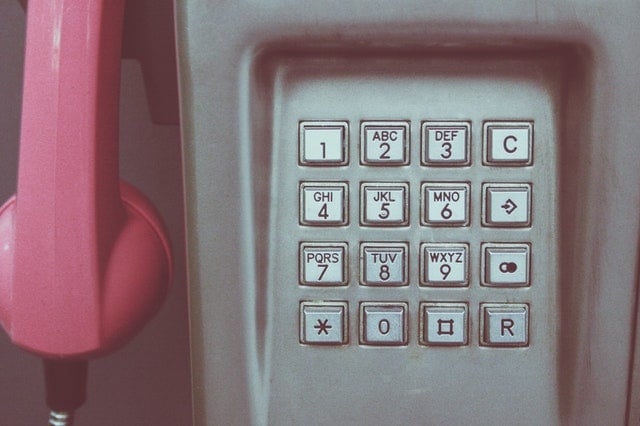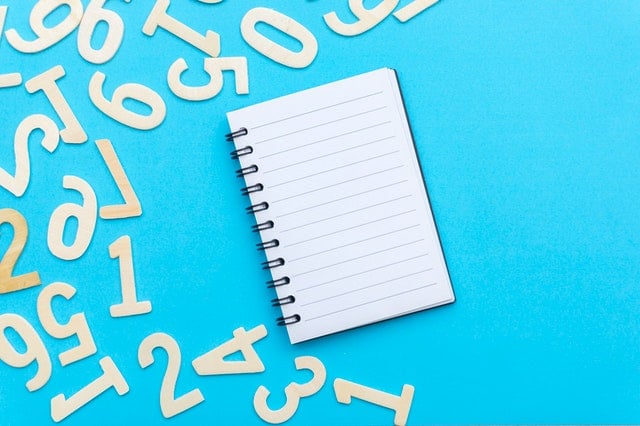How to Count in Spanish: All You Need to Know About Spanish Numbers
Has someone just asked your age at a party in Ibiza? Do you need to talk about estimated figures during a conference in Mexico City? Do you want to know how much it costs to order asado in an exclusive restaurant in Buenos Aires? If the answer to at least one of these questions is yes, there is something you will need to do before you travel: learn Spanish numbers!
Whether you need to talk about age, money or prices, keep reading to make sure you can do it in flawless Spanish!
Spanish numbers 0-15
It might be cute for small children to use their fingers to say how old they are. But if a Spanish person asked you how old your children are, counting with your fingers may not be the most dignified thing to do. So make sure you memorize these Spanish numbers:
0 – Cero
1 – Uno
2 – Dos
3 – Tres
4 – Cuatro
5 – Cinco
6 – Seis
7 – Siete
8 – Ocho
9 – Nueve
10 – Diez
11 – Once
12 – Doce
13 – Trece
14 – Catorce
15 – Quince
You may have noticed that I said “memorize” instead of “learn”. This is because numbers 0-15 do not follow any pattern. Apart from the fact that 12-15 end in “ce”, there are no formulas here.
Luckily, the next set of numbers is much easier to learn, especially for those who love patterns!

Spanish numbers 16-19
What do English numbers sixteen, seventeen, eighteen and nineteen have in common?
Exactly! They’re formed by adding the suffix “teen” to a single digit.
Spanish works in a very similar way:
16 – dieciseis
17 – diecisiete
18 – dieciocho
19 – diecinueve
If you’ve been paying attention, you will remember that number 10 is diez in Spanish. Well, the words above are formed by combining the word diez with a single digit, and then contracting the resulting phrase —diez y seis: dieciseis; diez y siete: diecisiete ; etc.
Easy, right? And it will only get easier from here.
Spanish numbers 20-99
If you are on a date and you want to say that you are 25 (whether that’s true or not!), pay attention. In this section, we are going to learn how to say the “ten” numbers (decenas), and I will tell you why 20-99 are actually the easiest Spanish numbers in this blog.
Decenas (Tens)
20 – veinte
30 – treinta
40 – cuarenta
50 – cincuenta
60 – sesenta
70 – setenta
80 – ochenta
90 – noventa
Spanish numbers: 21-29
From numbers 21-29, you have to apply a rule similar to the one we mentioned for 16-19. Instead of saying “veinte y uno”, we contract veinte y to “veinti” and then add uno without spaces in between: veintiuno.
21 – veintiuno
22 – veintidos
23 – veintitres
24 – veinticuatro
25 – veinticinco
26 – veintiseis
27 – veintisiete
28 – veintiocho
29 – veintinueve
Spanish numbers 31-99
From 31 onwards, things get even easier. Instead of using contractions, we use full tens and we add the word “y” (and) before the next digit.
Let’s see a few examples:
31 – treinta y uno
32 – treinta y dos
43 – cuarenta y tres
44 – cuarenta y cuatro
55 – cincuenta y cinco
56 – cincuenta y seis
67 – sesenta y siete
68 – sesenta y ocho
71 – setenta y uno
72 – setenta y dos
83 – ochenta y tres
84 – ochenta y cuatro
95 – noventa y cinco
96 – noventa y seis
Spanish numbers 100-999
In the previous section, we made sure that you can speak about age and dates. In this section, you will learn how to understand bigger numbers so that when your next credit card statement arrives, you won’t have a heart attack as you realize you spent much more than you had intended.
100 – cien
101 – ciento uno
Do you notice any difference among these Spanish numbers?
Very good! When “one hundred” stands alone, we say “cien”. However, when we combine it with other digits, we say “ciento”. The good news is that, no matter what number comes after “ciento”, we’ve already covered it above.
But do you know what the best part is? “One hundred” is the only “hundred” that has a stand-alone form! For the other hundreds, there is only one, no matter if they’re on their own or followed by other digits.
Here are all the “hundred” numbers in Spanish:
100 – cien
200 – doscientos
300 – trescientos
400 – cuatrocientos
500 – quinientos
600 – seiscientos
700 – setesientos
800 – ochocientos
900 – novecientos
If you want to say more specific digits, all you have to do is use these and then add the rest of the numbers.
For example, how many countries are there in the world? Ciento noventa y cinco.
How many pages does the last Harry Potter book have? Seiscientas seis.

Spanish numbers: 1000 and beyond
The “thousand” numbers are particularly useful to speak about years and dates. For example:
Yo nací en 1988 (mil novecientos ochenta y ocho)
I was born in 1988
Ahora estamos en 2022 (dos mil veintidos)
We are in 2022 now.
El hombre llegó a la luna en 1969 (mil novecientos sesenta y nueve)
Man landed on the moon in 1969.
If you want to add “thousand” before any given number, just use these words:
1000 – mil
2000 – dos mil
3000 – tres mil
(…)
9000 – nueve mil
10.000 – diez mil
20.000 – veinte mil
30.000 – treinta mil
(…)
90.000 – noventa mil
100.000 – cien mil
200.000 – doscientos mil
300.000 – trescientos mil
(…)
900.000 – novecientos mil
All you have to do is follow this pattern: number of thousands + word mil (+ rest of the number as seen in previous sections).
Oh, by the way, you may have noticed that, according to Spanish punctuation rules, we use stops, not commas, to separate big numbers!
Big Spanish numbers: millions, billions, and trillions
The words for Spanish big numbers are very similar to their English counterparts:
million – millón
billion – billón
trillion – trillón
As you can see, they’re almost the same words minus the second “i” and with the stress on the last syllable. But not so fast! Though the words may look alike, the concepts they stand for are strikingly different.
In English, a “billion” is one thousand millions (1,000,000,000) while a “trillion” stands for one thousand billions (1,000,000,000,000). To put it in a different way, every “step up” involves multiplication by 1,000.
This numbering method is known as a short-scale system. However, most Spanish-speaking countries use a “long scale” system. In countries like Spain and Argentina, a “billion” is one million millions, and a “trillion” is one million billion! In other words, instead of multiplying by a thousand each time, you multiply by a million.
Here are the biggest Spanish numbers and their English counterparts.
un millón – 1,000,000 (English: one million)
un millardo – 1,000,000,000 (English: one billion)
un billón – 1,000,000,000,000 (English: one trillion)
mil billones – 1,000,000,000,000,000 (English: one quadrillion)
un trillón – 1,000,000,000,000,000,000 (English: one quintillion)
Now that you know how to talk about age, dates, prices, wages, and a long list of number-related topics, how will you continue your Spanish learning?
Why don’t you do what our client Amanda did, and take an online course with a native tutor without leaving your home?
See what she had to say about her experience:
“My Spanish lessons are going very well. I’m impressed at how much I’ve learned in a few weeks. Irene is a fantastic teacher, and very flexible with her schedule!”
Or maybe you prefer an in-person course…? That’s just what Brian did in his home in Louisville, Kentucky, and it seems it’s working great for him as well:
“I am truly enjoying my lessons. I am both learning a lot and enjoying my teacher’s innovative instruction methods and practices. Irene is awesome! I would highly recommend her.”
Whether you prefer in-person or online lessons, you’ve come to the right place. Contact us now and we’ll match you with a fully qualified teacher for a tailored trial lesson based on your interests and needs.
